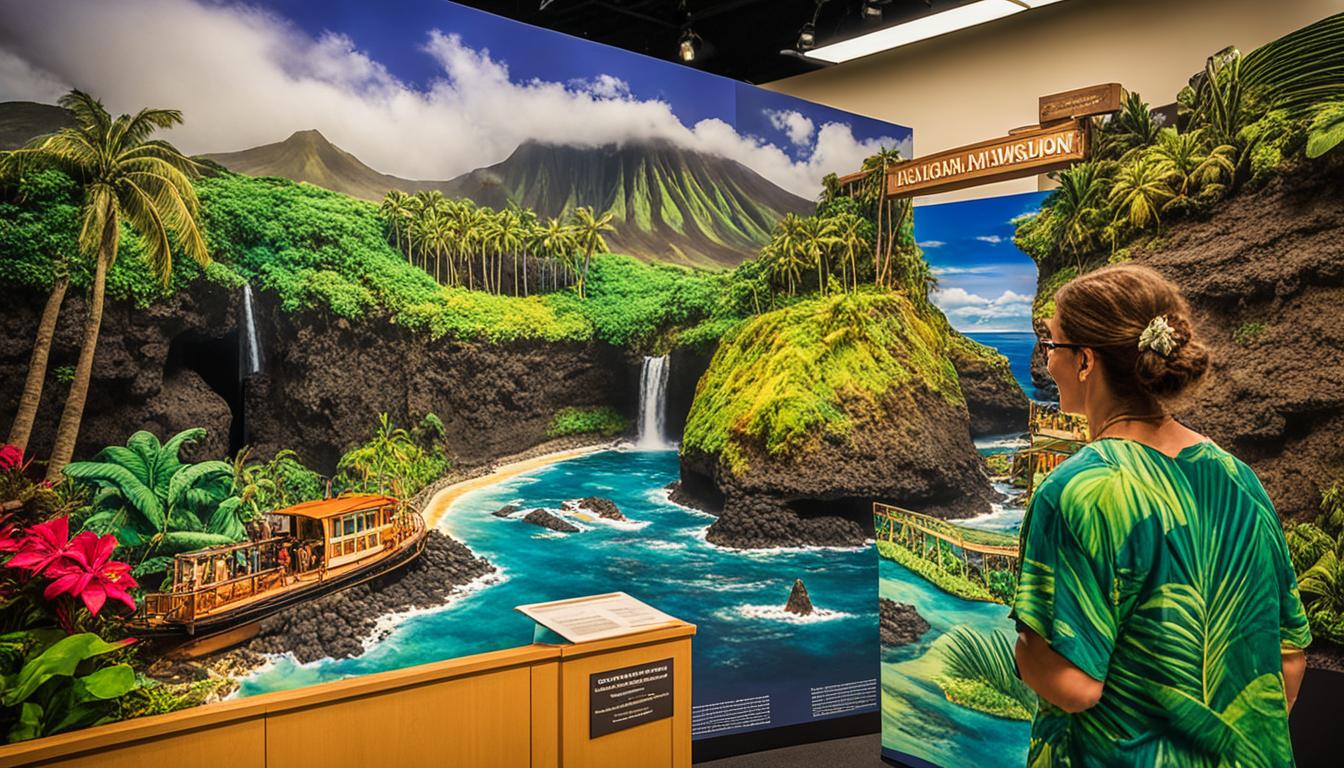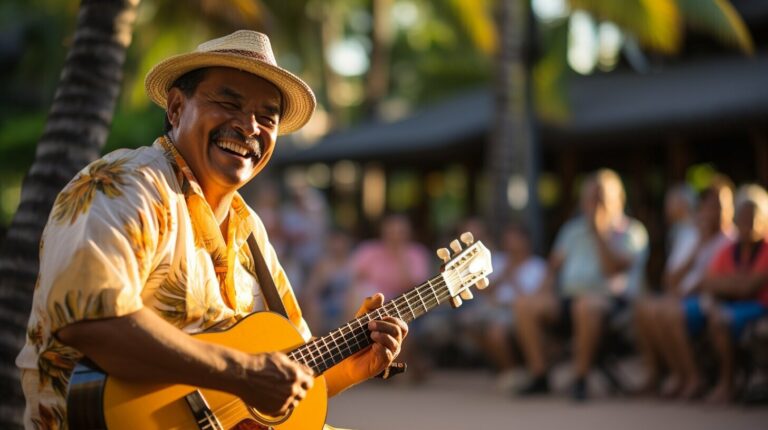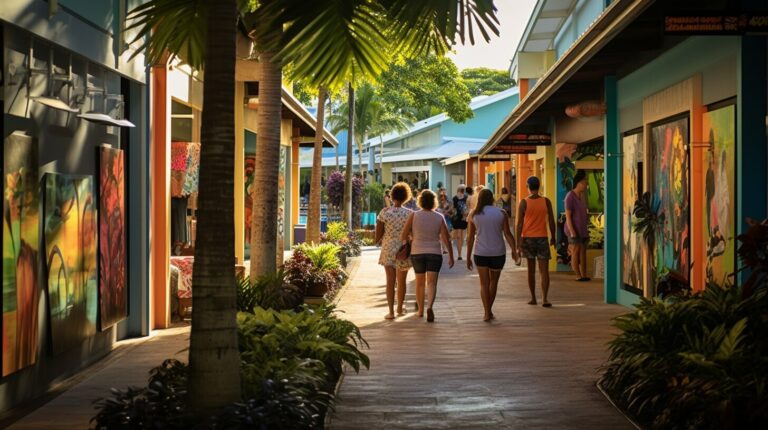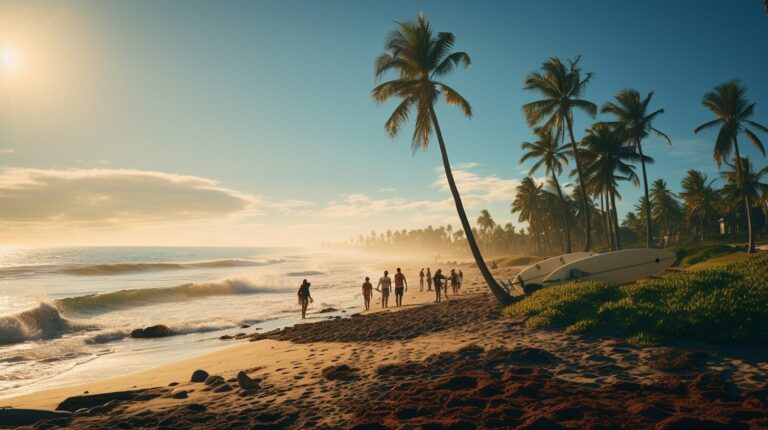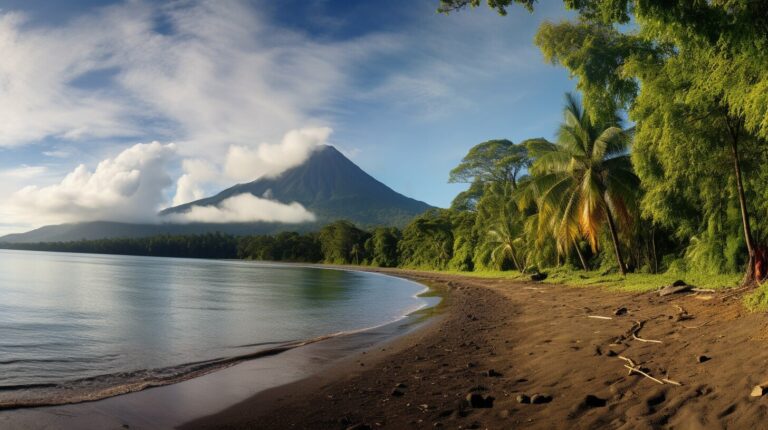Unveiling Big Island’s Cultural Tapestry 🌺: Museums, Art, and Natural Wonders
When one thinks of Hawaii, images of turquoise waves and vibrant sunsets come to mind, but what about the silent tales etched into its very fabric? Beyond the stunning landscapes, the Big Island of Hawaii is a treasure trove of cultural wisdom and historical whispers awaiting discovery within its diverse museums. From the tumultuous narratives of volcanic eruptions to the tranquil beauty of royal heirlooms, Big Island museums are portals to a past that has intricately shaped every facet of Hawaiian life. As you plan your Hawaiian adventure, make sure to include a journey through the cultural institutions in Big Island for an enriching experience that transcends the conventional island escape. Engage with the historical sites in Hawaii to embrace the soul of this majestic island. Indeed, among the many things to do in Big Island, delving into these repositories of knowledge through museum tours in Hawaii is an absolute must.
Key Takeaways
- Uncover the rich tapestry of Hawaiian royal heritage and lore beyond the beaches and sunsets.
- Discover why Big Island museums are not just optional extras but essential chapters in Hawaii’s living story.
- Step back in time to explore the Kingdom of Hawaii through cherished artifacts and personal memorabilia of royalty housed in these cultural gems.
- Learn about the vital contributions of the sugarcane industry and its profound impact on the Hawaiian lifestyle at specialized institutions.
- Experience a fusion of tradition and science at the `Imiloa Astronomy Center and see how ancient cultures viewed the cosmos.
- Realize the sobering power of nature through educational insights on volcanic landscapes and tsunamis that have shaped and reshaped the island.
- Connect with the local community and vibrant art scene through the colorful tapestry of museums, quilt collections, and farmers’ markets.
Unveiling the History and Culture at Big Island Museums
The allure of Big Island museums lies not solely in their exquisite collections, but in their profound ability to narrate the history and culture that have shaped Hawaii. Each cultural institution in Big Island is a treasure trove of knowledge, offering museum tours in Hawaii that bring to life the island’s storied past and its impact on the present. Visitors who step into these historical sites in Hawaii embark on a journey that transcends time, from the era of the Kingdom of Hawaii to the rise of astronomical exploration.
Reflecting on the Kingdom of Hawaii and Local Legends
The rich tapestry of Hawaii’s royal heritage is intricately woven into the exhibits at Huliheʻe Palace, an erstwhile vacation haven for Hawaiian royalty. Now transformed into a museum, it showcases the personal effects of the royal families, allowing visitors to capture a glimpse of the regal lifestyle. Similarly, the Honokaʻa Heritage Center celebrates not only the local legends but also the tumultuous history that has shaped the modern-day town of Honokaʻa with engaging exhibits and self-guided tours.
Spotlight on Hawaii’s Large-Scale Sugarcane Legacy
Shifting focus from regal to rural, the Hawaii Plantation Museum presents an in-depth look into the sugarcane era that once dominated Hawaii’s economy. As a central figure in the development of the island’s lifestyle, the museum showcases an array of sugar plantation artifacts, chronicling how this industry influenced Hawaii’s culture and economy until tourism took the lead in the 1970s.
Astronomy and Science Exhibits at `Imiloa Astronomy Center
At the pinnacle of blending tradition with modernity stands the `Imiloa Astronomy Center, a symbol of how Hawaiian cultural traditions mesh with the scientific world of astronomy. Here, interactive exhibits plunge visitors into the wonders of the cosmos, while planetarium shows and annual events emphasize the seamless integration of indigenous knowledge with current astronomical research.
| Museum/Institution | Featured Exhibits | Cultural Significance |
|---|---|---|
| Huliheʻe Palace | Royal family memorabilia | Insight into Hawaiian regal history |
| Honokaʻa Heritage Center | Educational exhibits, self-guided tours | Presentation of local legends and Honokaʻa’s development |
| Hawaii Plantation Museum | Sugar plantation artifacts | Exploration of the sugar industry’s impact on Hawaii |
| `Imiloa Astronomy Center | Interactive astronomy exhibits, planetarium | Intersection of Hawaiian tradition with astronomical science |
Whether through the reflection of aristocratic lives, the echo of plantation fields, or the gaze towards the stars, Big Island museums serve as a vessel to appreciate and understand Hawaii’s diverse layers of history and heritage. A visit to these museums is more than a tour; it’s an experiential learning opportunity steeped in the spirit of aloha.
Big Island Museums
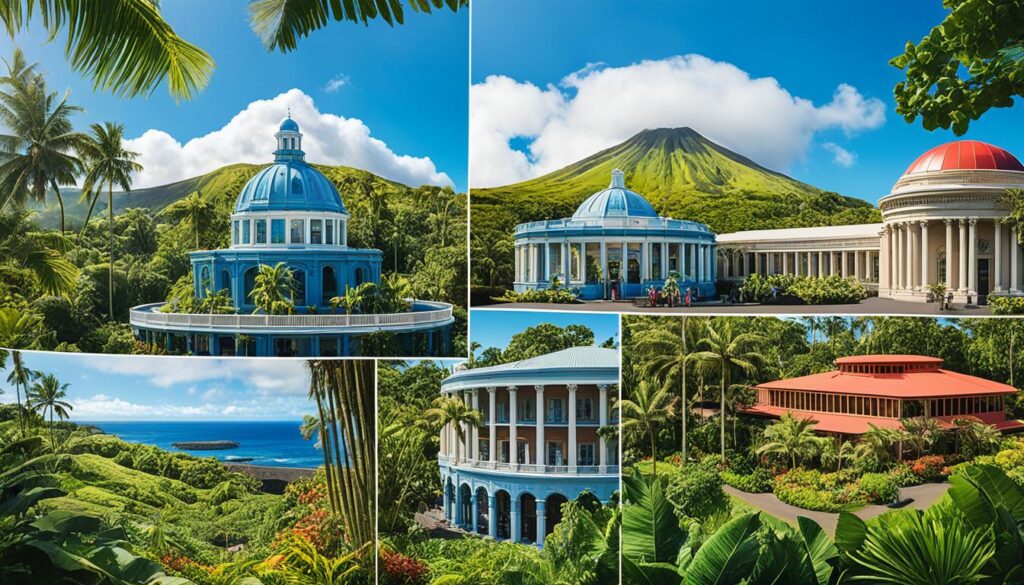
Embarking on a journey through Big Island museums unlocks a world of knowledge and beauty, offering a multitude of things to do in Big Island. Visitors are captivated by these guardians of history and tradition, which provide a profound understanding of Hawaii’s rich heritage. Each institution stands as a testament to different aspects of the island’s past and present, making them pivotal Hawaii museums to explore.
The Kilauea Visitor Center, situated at the heart of the Hawaii Volcanoes National Park, invites guests to discover the stunning volcanic landscapes that define the region. The Center is instrumental in educating visitors on geological phenomena and conservation efforts. The stark contrast with the serene and devastating artefacts at the Pacific Tsunami Museum allows for a comprehensive understanding of natural forces that have shaped the islands.
| Museum | Focus | Unique Exhibits |
|---|---|---|
| Kilauea Visitor Center | Volcanology | Interactive displays on volcanic activity |
| Pacific Tsunami Museum | Tsunami History & Awareness | Educational simulations and survivor testimonials |
| Lyman Museum & Mission House | Natural & Cultural History | Historic mission house tours and Hawaiian artifact collections |
| Laupahoehoe Train Museum | Hawaii’s Railroading | Memorabilia of the Hilo Railroad |
A visit to the Lyman Museum & Mission House provides insights into Hawaii’s unique cultural tapestry and natural history, embracing both the environmental and the spiritual facets of the island. For those enthralled by locomotive heritage, the Laupahoehoe Train Museum is a quaint tribute to Hawaii’s railroad history, complete with engaging displays and artifacts from the era of the Hilo Railroad.
- Understanding volcanic phenomena at the Kilauea Visitor Center
- Reflecting on natural disasters at the Pacific Tsunami Museum
- Diving into the diverse natural and cultural history at the Lyman Museum
- Reliving the golden age of railroading at the Laupahoehoe Train Museum
Through captivating exhibits and storytelling, these institutions bestow upon visitors not only knowledge but also a reflective experience that resonates long after their departure. The mosaic of Big Island’s museums enriches the travel itinerary of adventurous souls and curious minds alike, making it one of the most engaging things to do in Big Island.
Navigating Big Island’s Art Scene Through Museums
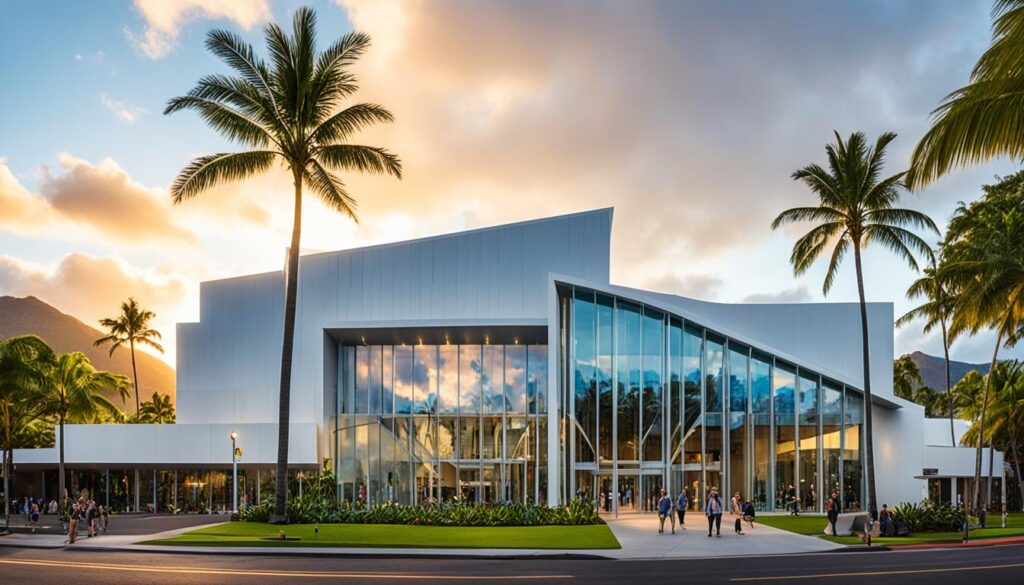
Delving into the vibrant art scene on Big Island reveals a tapestry woven with the threads of history, culture, and creativity. As you traverse the lush landscapes of this Hawaiian haven, an array of art-centric spaces beckons, offering visitors a chance to immerse themselves in the island’s artistic offerings.
Contemporary Art at Hawaiʻi Museum of Contemporary Art
The Hawaiʻi Museum of Contemporary Art (HMOCA) stands at the forefront, presenting a medley of art forms that speak to the modern spirit. The museum offers a dynamic collection of temporary exhibitions focused on both international and Hawaii-based artists. Offering a broader understanding of the contemporary art movement within the Pacific region, HMOCA remains an essential destination for those seeking cultural enrichment amidst their Hawaiian journey.
Hawaiian Quilts and Craftsmanship at Quilt Museums
For a touch of tradition, the Hawaiian Quilt Museum showcases the intricacy and cultural significance of Hawaiian quilting. Exhibiting an exquisite array of locally made vintage and contemporary quilts, it champions the enduring legacy of the islands’ craftsmanship. Often colorful, always meaningful, these quilts stitch together stories of Hawaiian life, inviting families to explore an art form that is as educative as it is beautiful.
Discover Local Talents at Community Farmers & Artisans Markets
However, art on the Big Island is not confined to galleries alone. Community Farmers & Artisans Markets represent the pulsing heart of local creativity. Here, at places like the Hoʻoulu Community Farmers & Artisans Market, one can experience the living culture of the island. These markets brim with live music, handcrafted goods, and fresh produce, providing a panorama of artisanal craft and agricultural abundance that encapsulates the Big Island spirit.
Whether it’s the polychromatic vision of contemporary artists at HMOCA, the stitched tales of the Quilt Museums, or the vibrant gatherings of community markets, these cultural institutions in Big Island serve as portals to explore and celebrate the eclectic art scene. When mapping out things to do in Big Island, adding these museums and markets to your itinerary ensures a rich encounter with the historical sites in Hawaii and an authentic artistic discovery.
Engaging with Big Island’s Natural Wonders in Museums
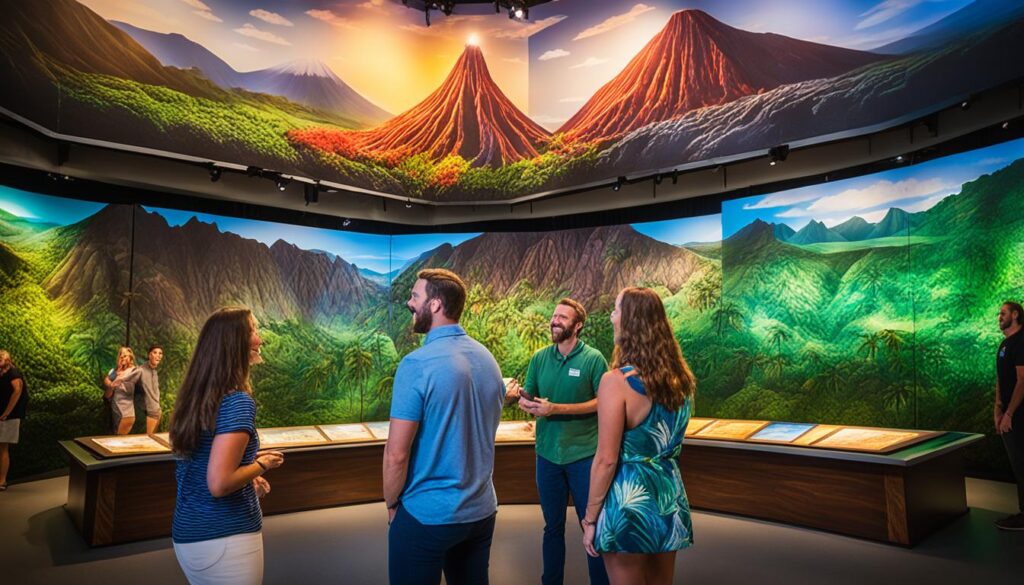
For those fascinated by the awe-inspiring natural features of the Big Island, the island’s museums provide a front-row seat to the origins and impact of its most breathtaking landscapes and natural events. Big Island museums not only showcase historical sites in Hawaii but also serve as stewards of the island’s geophysical narrative, each offering distinctive museum tours in Hawaii.
Volcanic Landscapes Uncovered at Kilauea Visitor Center
The Kilauea Visitor Center stands as a beacon for all things volcanic, starting with a comprehensive introduction to the Hawaii Volcanoes National Park. Here, visitors immerse themselves in geological wonders, absorbing details on current volcanic activity, diverse ecology, and the rich cultural background of this dynamic region. The nearby Jaggar Museum augments this learning experience with its unparalleled vantage points and exhibits, shedding light on the volcanic forces shaping the archipelago.
Parker Ranch Historic Homes & Insights into Paniolo Culture
Stepping into the Parker Ranch is akin to traveling back in time to discover the history of Hawaii’s Paniolo. This sprawling estate pre-dates many historical sites in Hawaii and is among the largest ranches in the United States, offering an authentic look into the paniolo way of life through museum tours of revered historic homes and impressive art collections.
Understanding Tsunamis at the Pacific Tsunami Museum
Education and remembrance converge at the Pacific Tsunami Museum, a center dedicated to deciphering the past and raising awareness on the formidable power of tsunamis. Through poignant exhibits and survivor testimonies, the museum accentuates the resilience of the Hawaiian people and underscores the importance of preparedness in the face of such natural catastrophes.
Whether it’s exploring the thrilling volcanic landscapes, delving into the paniolo heritage, or grasping the persisting influence of tsunamis, Big Island museums offer an eclectic array of things to do in Big Island, celebrating its natural marvels and the culture these wonders have inspired.
Conclusion
Embarking on a journey through the Big Island museums is more than a simple tour; it’s an immersive experience that brings to life the island’s multifaceted narrative. From the grandeur of Hawaiian royalty at the magnificent historical sites in Hawaii to the humble stories of plantation life, the cultural institutions in Big Island capture the essence of what it truly means to understand and appreciate Hawaii’s rich history. The diverse exhibitions and curated tours provided by these museums make them an indispensable part of the things to do in Big Island, inviting locals and travelers alike to delve deep into the heart of the island’s past and present.
As guardians of the island’s cultural and natural legacy, these Hawaii museums serve as vital educational resources, inspiring curiosity and offering enlightenment. They celebrate the environment through lenses such as the burgeoning field of astronomy and honor the traditional Hawaiian arts, making every aspect of museum tours in Hawaii a narrative thread in the tapestry of Hawaiian culture. The intricate displays and collections housed within these museums afford visitors a chance to intimately connect with the island, fostering a greater appreciation for its unique cultural identity and environmental wonders.
In essence, the exploration of the Big Island’s museums is a voyage that transcends time, from the formation of the archipelago to present day, marking each museum as an essential destination. The knowledge and emotions garnered through this exploration underscore why these cultural institutions are not just stops along a tourist’s itinerary—each one is a portal to the profound stories and remarkable phenomena that mold the Big Island’s spectacular legacy.

